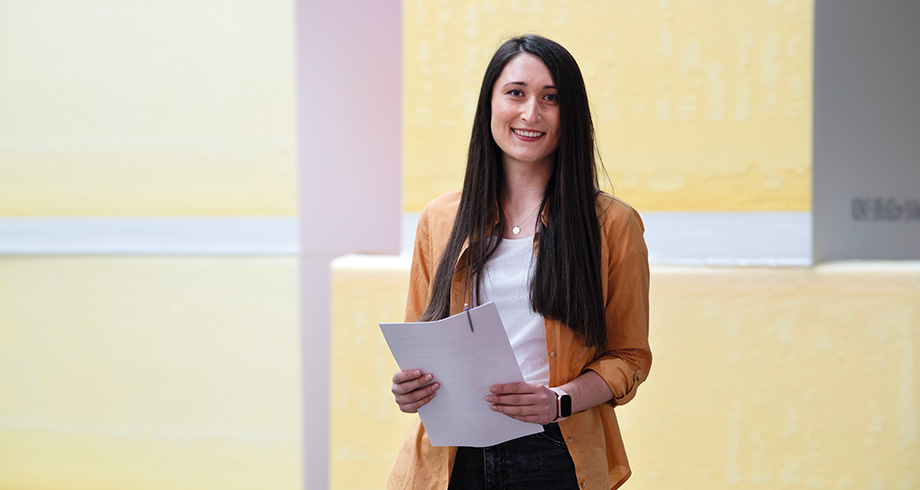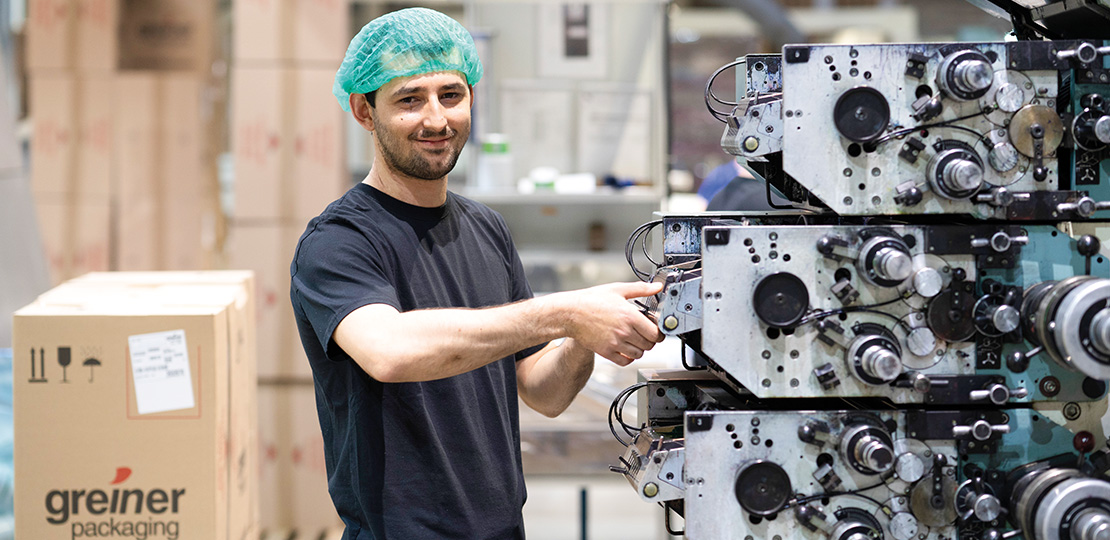Becoming a carbon neutral company
The higher energy consumption compared to 2018 is a result of increased production in 2020 compared to 2019 as well as the integration of Eurofoam. Most (78 percent) of our energy consumption is generated through the purchase of electricity, which has risen by six percent since 2018 for the reasons listed above.
Total electricity consumption (MWh)
Greiner

“We can become a climate-neutral company only when we measure our energy consumption and optimize it on an ongoing basis.”
Total electricity consumption by division (MWh)
Greiner Bio-One
Greiner Packaging
NEVEON
Greiner Extrusion
As already explained, Greiner uses fuel both in production and for the vehicle fleet. Overall, fuel consumption increased from 81,995 MWh in 2018 to 98,191 MWh in 2020, a rise of about 22 percent. In terms of NEVEON, it is clear that the rise in total fuel consumption is chiefly a result of the Eurofoam takeover. Fuel consumption in the other three divisions declined consistently on account of the pandemic and the associated travel restrictions.
Fuel consumption1 (MWh)
However, integrating Eurofoam did not impact cooling energy requirements as this is used primarily at a Greiner Packaging site in Litvinov (Czech Republic). This has seen a slight 4.7 percent decline in the last three years.
Cooling energy (MWh)
Greiner
The effect of the Eurofoam integration is particularly clear when looking at heating energy, which increased fourfold between 2019 and 2020 due to heating energy requirements.
Heating energy (MWh)
Greiner
No heating energy, cooling energy or steam power is sold at Greiner. The only exception here is electricity. The Greiner Packaging headquarters in Sattledt (Austria) supplies the grid with the green electricity generated at a photovoltaic plant.
Electricity sold (MWh)
Greiner
Electricity from renewable energy
Most of our Scope 1 and Scope 2 emissions are attributable to our electricity consumption (79 percent) and so switching to green electricity is a major step in reducing our emissions. There are many answers to the question as to what a switch to electricity from renewable energy might look like. Building photovoltaic plants is one possibility. But the potential of this is very limited as the amount of electricity generated can cover only a very small part of our electricity needs. Green electricity products thus play a far more important role, even though green electricity tariffs are not available in all countries where we have production sites. In light of this, buying guarantees of origin is a particularly good short-term alternative. As the price of guarantees of origin is currently too low to further expand the share of renewable energies, in the longer term we have opted for a more sustainable option that has the potential to create real change.
One thing is for certain: the importance of green electricity is indisputable. This is why our goal is to increase our share of renewable energy to 70 percent of our total electricity requirements by 2025. By 2030, we aim to have reached 90 percent. What is the current state of play? The diagram below shows our green electricity consumption.
Renewable electricity (MWh)

Ioan Adrian Stanese (Greiner Packaging)
Thermoforming Setter
Kremsmünster (Greiner Packaging) Savings: 1,220 MWh (440 t CO2e)
Cool down! Using river water for process cooling
Greiner Packaging carried out our second-largest project in the reporting period related to energy savings at the headquarters in Kremsmünster (Austria). Under the EU Water Framework Directive, the Mühlbach river that flows through the plant premises had to be redirected. To comply with the official regulations while still being able to use water from the Mühlbach in our production processes for process cooling, we had several hundred meters of pipes laid and a filter system, a pump station and an outlet built. Better filtration and a more efficient heat exchanger and a new refrigeration system allowed us to further improve the efficiency of process cooling, achieving savings potential of 1,220 megawatt hours per year for the next 20 years.
We have already taken the first key step towards green electricity – since July 2019, all Austrian Greiner sites have been supplied with 100 percent certified green electricity. As well as a photovoltaic plant in Switzerland, in 2020 colleagues from Greiner Bio-One in Frickenhausen (Germany) and colleagues from Greiner Packaging at the Leresti site (Romania) opted to make the switch to renewable electricity. The Greiner Packaging site in Dungannon (Northern Ireland) is also showing the way and has run on renewable electricity through guarantees of origin since April 2021. Despite this, green electricity accounted for just 26 percent in 2020 and so we are still a long way away from reaching our own target of 70 percent by 2025. However, we launched a whole host of initiatives, mainly in 2020, to achieve this goal and we are still working hard on this.
Produce our own electricity using photovoltaics
By 2030, our aim is for 2.5 percent of our total electricity requirement to be met by electricity we have produced ourselves. Although the share of electricity produced by us is currently still less than one percent, in the reporting period we took the first steps towards coming closer to this goal. We launched an initiative to establish photovoltaic plants in key countries with production sites, such as Austria and Romania. We will see the first results of this in 2021, including the construction of additional photovoltaic plants. Greiner Bio-One is our role model. Its subsidiary Mediscan will install a photovoltaic plant in 2021, bringing us one step closer to this target.
Buy green electricity in the short term
In the future, we also intend to use more green electricity in other countries. Depending on availability, we prioritize the purchase of guarantees of origin together with an electricity product (bundled certificates) and, in countries where this is not possible, guarantees of origin independently of the electricity product (unbundled certificates). Guarantees of origin will remain a solution until we have harmonized our European electricity purchases within Greiner and switched to renewable electricity.
Promote development of green electricity in the long term
One of the most sustainable solutions currently open to companies and on which we are currently working is the establishment of a Power Purchase Agreement (PPA). This is crème de la crème of options when it comes to different ways of procuring green electricity, as PPAs can promote the increased use of renewables. PPAs are chiefly to be the solution to using more renewable electricity in Europe. We consider PPAs a win-win situation for everyone involved. As buyers, they give us “real” transparency and can show where our green electricity comes from. In turn, the long-term supply agreements provide producers with guaranteed electricity purchases for many years, reducing the investment risk. This way, we help provide more green electricity on the European market.
Power Purchase Agreements
A Power Purchase Agreement (PPA) is a long-term electricity supply agreement between two parties, usually between a seller (operator) and a buyer (electricity consumer – e.g. energy supplier or major industrial consumer). The agreement sets out the conditions for supplying a quantity of electricity at a fixed price or for equivalent financial compensation. As well as contractual protection against rising electricity prices, the parties typically also conclude agreements on transferring guarantees of origin for the electricity generated by the operator.

